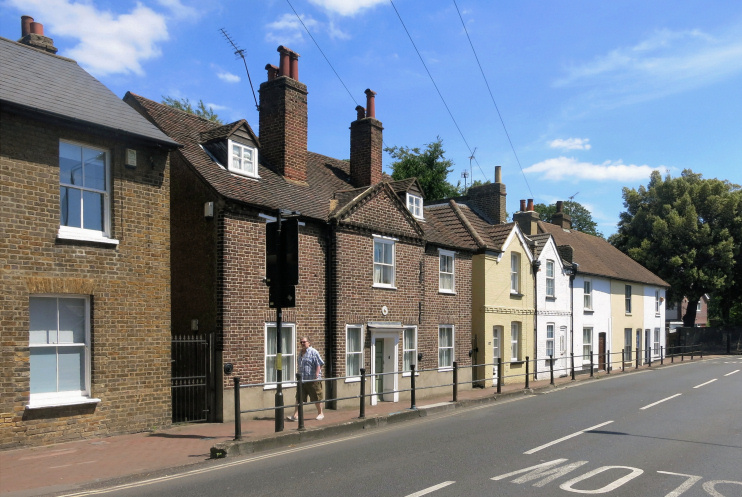Old Bexley
Old Bexley, Bexley
Also known as Bexley Village, this is the historic heart of Bexley, situated at the south-eastern corner of the modern suburb

Old Bexley lies at the juncture of two ancient tracks beside a ford on the River Cray. One historic route ran east–west between Eltham and Dartford and the other followed the river north–south from Crayford to Orpington. These routes were well established in the Middle Ages, crossing the River Cray where today’s bridge now stands.
The grade II* listed parish church of St Mary the Virgin was built in the 13th century on the site of a Saxon predecessor, probably using some of its stones. The church is located near the eastern end of the High Street, on Manor Road.
The manor of Bexley belonged to the Archbishop of Canterbury until 1536, when it was sold to Oxford University. Part of the present manor house may date from soon after that. A north wing was added in the early 19th century. The well-concealed house stands north-east of St Mary’s church.
Bexley’s ‘Old’ prefix made its appearance in the second half of the 19th century and helped distinguish the village from Bexley New Town, as Bexleyheath was called at that time.
St Mary’s church was heavily restored in 1882–3 by Basil Champneys and its present interior dates primarily from this makeover.
A number of 18th-century buildings on the south side of the High Street were lost during redevelopment in 1966. The Old Mill burned down in the same year but it was rebuilt in replica form and later converted to residential use.
The remainder of the village has been preserved following its designation as a conservation area in 1972. Eighteen of the buildings in the conservation area are listed.

Among the surviving older properties are the King’s Head public house (probably 16th century), Styleman’s almshouses (1755), High Street House (1761, the home of John Thorpe, Kent historian and antiquary) and the former parish workhouse (1787).
Old Bexley cannot compete with Bexleyheath as a retail centre, so several shops and other commercial premises have been converted to cafés, bars and restaurants. The late-Victorian Freemantle Hall serves as a community centre and hosts events such as local art exhibitions, exercise classes, and craft and gift fairs.
Postcode area: Bexley DA5
Further reading: Peter Tester, Bexley Village, Bexley Libraries, 1987
Recommended PDF (and the source for some of the content above): Old Bexley conservation area appraisal, 2009
